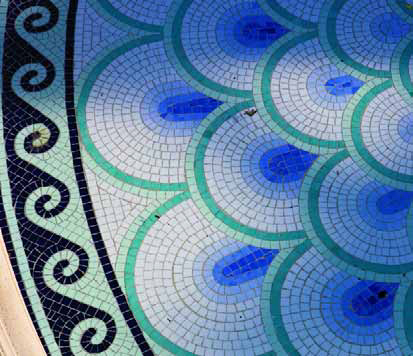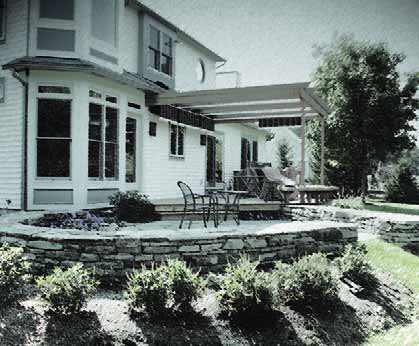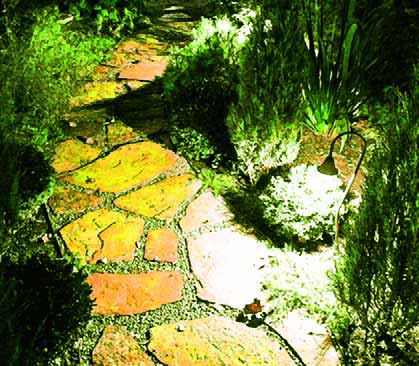column
Not long ago, I was asked by a reporter from The New York Times to define the main difference between swimming pools now compared to what they were 20 years ago. As we talked, it became clear that she was mostly thinking about technological breakthroughs in pumps and chemical treatments and the like. I confirmed for her that, yes, those products had come a long way. But I wouldn't let her stop there, suggesting that there was much more than a run of technical advancements behind the explosion of interest in watershapes in the recent decades. What we've also been seeing, I said, is a latter-day Renaissance of interest in classical notions of
I've always believed that an unlimited budget is not essential to making design magic. While having clients with deep pockets and a willingness to dig deeply into them is always nice and allows us a bit more leeway when it comes to artistic license, I've always observed that having relatively few constraints also tends to make some designers creatively lazy. By contrast, I've often found small-budget, small-space projects to be creatively stimulating. A couple of columns ago, for example, I discussed a project we'd been working on that posed challenges with its sunken deck footings and the need to accomplish a lot with
I've always believed that an unlimited budget is not essential to making design magic. While having clients with deep pockets and a willingness to dig deeply into them is always nice and allows us a bit more leeway when it comes to artistic license, I've always observed that having relatively few constraints also tends to make some designers creatively lazy. By contrast, I've often found small-budget, small-space projects to be creatively stimulating. A couple of columns ago, for example, I discussed a project we'd been working on that posed challenges with its sunken deck footings and the need to accomplish a lot with
I've written several times in the past about the fact that more and more landscape architects and designers are getting into watershaping. As evidence, all you need to do is look at design-award competitions in the pool and spa industry and note the increasing number of submissions from landscape professionals: It's even getting to the point in some programs where they're outnumbering participants who come from the traditional pool and spa industry. You'll find even more evidence of this phenomenon on the web sites of landscape-focused companies, where you'll see watershapes of all shapes and descriptions in most of their photo galleries. Moreover, many I know in the pool and spa industry have had the experience of
I've written several times in the past about the fact that more and more landscape architects and designers are getting into watershaping. As evidence, all you need to do is look at design-award competitions in the pool and spa industry and note the increasing number of submissions from landscape professionals: It's even getting to the point in some programs where they're outnumbering participants who come from the traditional pool and spa industry. You'll find even more evidence of this phenomenon on the web sites of landscape-focused companies, where you'll see watershapes of all shapes and descriptions in most of their photo galleries. Moreover, many I know in the pool and spa industry have had the experience of
For years now, the power of teamwork and the communication it requires have been recurring, primary themes in the pages of WaterShapes. It's no secret that, more than ever before, the design, engineering and construction of custom watershapes of all sorts is a multi-disciplinary undertaking that involves
For years now, the power of teamwork and the communication it requires have been recurring, primary themes in the pages of WaterShapes. It's no secret that, more than ever before, the design, engineering and construction of custom watershapes of all sorts is a multi-disciplinary undertaking that involves
In the parlance of those who know best, it's time to discuss "mud" - the concrete material out of which most watershape shells are made. Mud enters the scene after the steel, plumbing, electrical conduits and forms have been placed and, in some jurisdictions, all work to that point has passed careful inspection. The concrete itself can take any of four forms: concrete block or poured-in-place concrete (neither of which is used very often), or gunite or shotcrete (far more commonly used). In my three decades of building watershapes, I've worked with all of these materials. If a very specific set of circumstances calls for the use of
In the parlance of those who know best, it's time to discuss "mud" - the concrete material out of which most watershape shells are made. Mud enters the scene after the steel, plumbing, electrical conduits and forms have been placed and, in some jurisdictions, all work to that point has passed careful inspection. The concrete itself can take any of four forms: concrete block or poured-in-place concrete (neither of which is used very often), or gunite or shotcrete (far more commonly used). In my three decades of building watershapes, I've worked with all of these materials. If a very specific set of circumstances calls for the use of
Those of us who are designers and builders of full-scale outdoor environments (you know who you are) face a distinct challenge: In our work for our clients, we are expected to provide the outline and details for a huge range of project elements, from watershapes and patios to plantings and walkways and more. That list, at least so far as clients are concerned, also includes appropriate lighting, but that is not always something on which we focus. Indeed, lighting design is seen as a specialty even by those who tackle almost every other project feature - and there's no problem with that unless


















